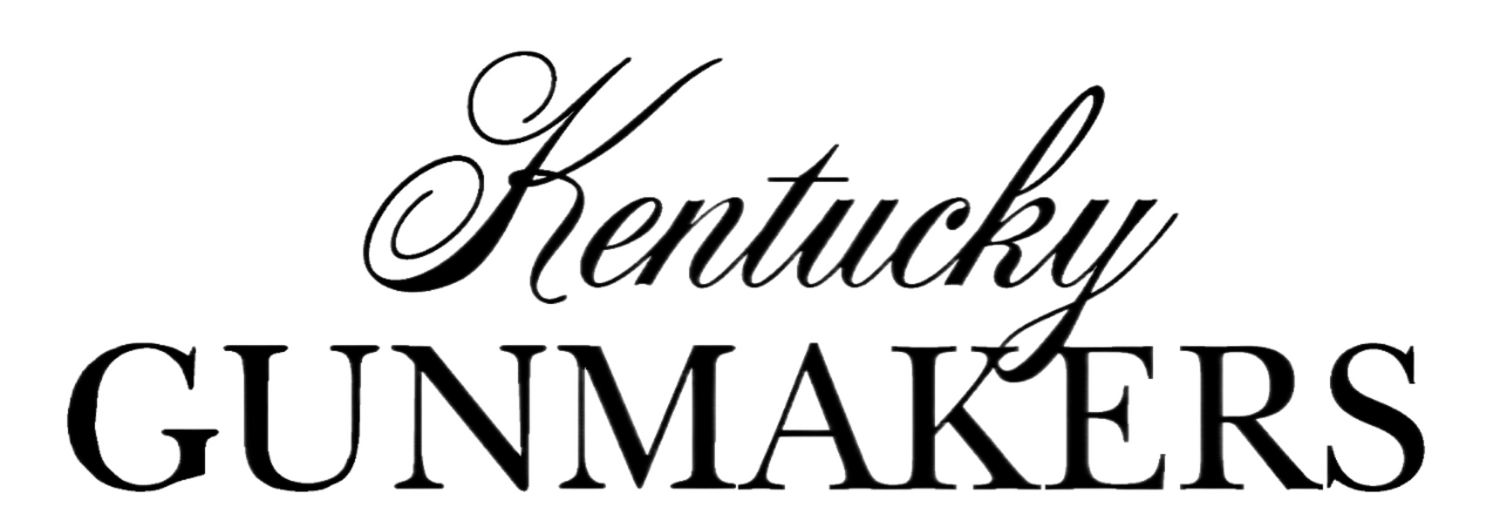Kentucky’s “Hawken” Rifles by Louisville Gunsmith Joseph Griffith ©
Foreword: St. Louis was famous for its Hawken rifles, the rugged half-stocked, double-keyed, large-bored rifles of the western fur trade used by men like Kit Carson and Jim Bridger. But St. Louis was not the only city making tough, large-bored plains rifles in the mid-1800s. A steady stream of easterners heading west used the Ohio River to begin their journey, and those adventurers all stopped at Louisville, Kentucky, briefly to get around the Falls of the Ohio. While there, they could purchase supplies including new rifles. Several better Kentucky gunmakers made large caliber, half-stocked rifles for the western trade; among them was Louisville’s Joseph Griffith who made Kentucky’s answer to the Hawken rifles of St. Louis.
Figure No.1: Joseph Griffith made half-stocked plains rifles in the mid-1850s for the western trade. Easterners travelling west on the Ohio River stopped at Louisville and often purchased supplies including new rifles. While not an exact copy of a St. Louis Hawken rifle, Griffith’s half-stocked rifles were double-keyed, iron mounted, and large bored like a Hawken rifle, workmanship was equivalent, and overall appearance rather similar. Barrel: 37 inches long with .55 caliber bore. Author’s collection, photos by J. Jaeger.
Joseph Griffith: Griffith was born into a gunsmithing family in Wedgebray, England in 1801.The Griffith family moved to the United States in 1817 where Joseph, his father, and several brothers were employed at the Harpers Ferry Arsenal in Virginia. Joseph later worked as a gunsmith in Philadelphia, then moved to Louisville, Kentucky in 1837 and opened a gun shop at the corner of Main and 5th Streets. He realized early in his Louisville career that he could import gun parts from back east and stock them more quickly than making the parts himself. Griffith quickly became a major competitor to Moses Dickson, Louisville’s well-established earlier gunsmith. Dickson was known for his high-quality rifles, but Griffith matched him in reliability and workmanship. Griffith’s business grew into one of the largest gunsmith/hardware stores in Louisville, selling gun hardware, a variety of imported guns, and sporting goods along with his own rifles. He became known for his half-stocked, iron mounted guns later in his career when making rifles for the western trade on the Ohio River. When Griffith died in 1873, his sons William and Joseph Jr. took over the business.
Griffith’s “Hawken” Rifle: Griffith was known for making large bore, iron mounted, half-stocked rifles for the western trade in the mid-1800s. A good example of his work is shown in Figure No.1. The gun is half-stocked in walnut and double-keyed with a large bore and oval-shaped cheekpiece like the Hawken rifles of St. Louis. Perhaps its most noticeable difference is the shape of the guard without the Hawken loop at the back end. The barrel is stamped “J. Griffith Louisville Ky.” Griffith often used the same stamp on his lock plates. Hawken collectors may argue about the quality and durability of Hawken guns, but Griffith’s rifles were equally well-made and capable of hard use, and the illustrated rifle’s large .55 caliber bore was capable of stopping grizzlies.
Figure No.2: The Griffith plains rifle has figured walnut in its butt stock and iron mountings including the guard, butt plate, toe plate, and . The gun has both open and peep sights for short- and long-range shooting. Oval barrel key inlays resemble those on Hawken rifles.
Figure No.3: The back of the Louisville plains rifle has a patent breech and oval cheekpiece, much like a Hawken rifle. The cheek area shows its attractive figured walnut stock wood. Clean, triangular butt lines were common on Kentucky guns, as well as on Hawken rifles.
The front side of the Griffith plains rifle in Figure No.2 displays its nicely figured walnut stock wood in the butt, an indication of a premium Griffith rifle. The gun has iron furniture, double-set triggers, and a patent breech along with both open and peep sights. The back of the rifle in Figure No.3 has a neatly rounded cheekpiece commonly called a “beaver tail” cheek. Griffith’s work was neatly done and somewhat understated without a lot of embellishments. The rifle’s sharp, clean lines and graceful stock architecture were its attractive elements, since Griffith seldom used inlays to enhance his guns. The simple lock bolt washer, oval inlays at the barrel wedges, and clean Kentucky butt add a touch of elegance to the rifle. The guard style suggests a mid-1850s date and is the most obvious difference between Griffith’s guns and a Hawken rifle.
Summary: The Hawken rifle was the gun of choice for western fur traders, mountain men, and adventurers in the mid-1800s, with its ruggedness and large bore that could stop large animals. But fine plains rifles were not restricted to St. Louis makers. Several Kentucky gunsmiths made large caliber, half-stocked rifles for the western trade coming down the Ohio river, and the best of those rifles, and most similar to a Hawken rifle, were made by Joseph Griffith of Louisville.



